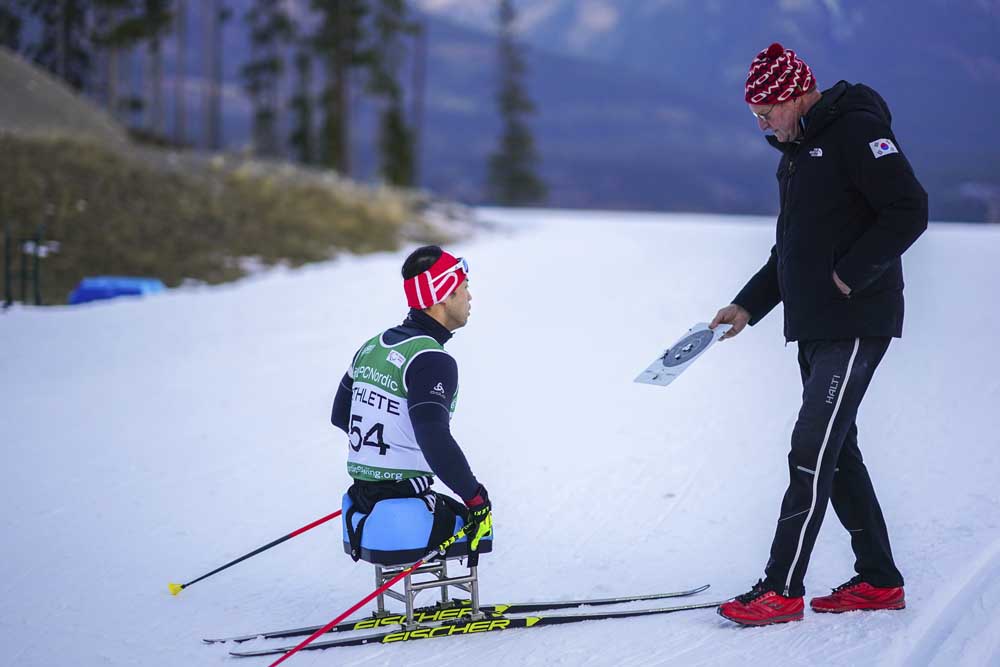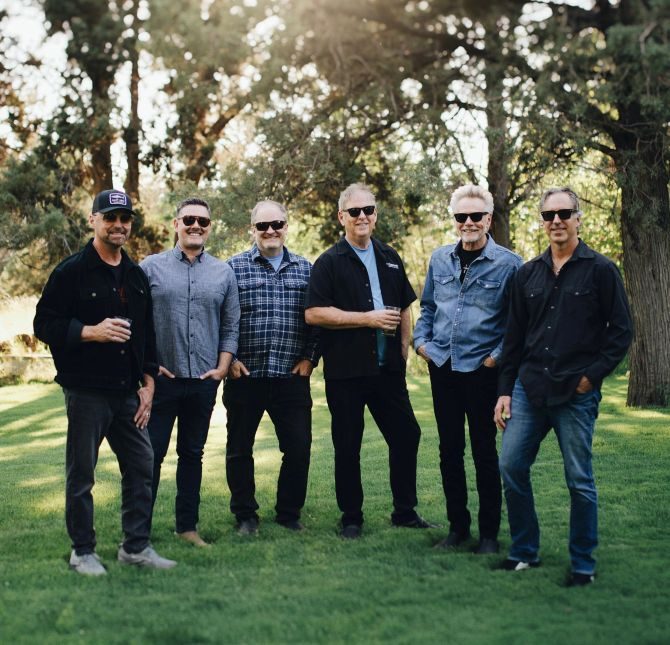Training for the games translates to full-time job
Published 12:00 am Sunday, March 18, 2018

- Kaspar Wirz, a Canadian who coaches South Korea’s para-nordic team, works with Won Yoomin at biathlon practice in Canmore, Alberta, Canada, in December. Hiring Wirz was part of South Korea’s effort to make its Paralympic team first class.(Chang W. Lee/The New York Times)
PYEONGCHANG, South Korea — The delegations ruling the medal table at the Paralympics share a common trait: During the past decade they decided to invest the resources necessary to afford their athletes the same respect, coaching, equipment and opportunities that able-bodied athletes receive.
From the Wasatch Range in Utah to the Canadian Rockies and the Korean Peninsula, they have transformed what had recently been a modest endeavor into a professional pursuit.
“It’s not just five months on the snow and then you go home and kick back and drink mai tais on the beach,” U.S. snowboarder Jimmy Sides said.
Not even close.
“We’re in the gym every day Monday through Friday in the summer getting strong, eating right, getting enough sleep, staying healthy, staying active to perform,” he continued.
In other words, living how Olympians are supposed to live.
Nowhere is this attitude more apparent than in skiing, in both nordic and alpine disciplines, where the United States, Canada and South Korea have revolutionized their approaches.
To emphasize more equal treatment, Alpine Canada rebranded two years ago as the Canada Ski Team, a move that facilitated promotion of both the alpine and para-alpine teams while also redirecting sponsorship money toward the para program. Along with Japan and the United States, Canada is at the vanguard of innovative sit-ski design.
The U.S. team augmented its technical staff by adding renowned coaches like Ben Black, who worked with the two-time Olympic gold medalist Ted Ligety, and Gary Colliander, an expert in physiology who assisted with the biathlon team at the Vancouver Olympics in 2010. On Tuesday, Colliander watched Dan Cnossen (silver) and Andy Soule (bronze) become the first two Americans to reach the podium in a single biathlon event — at the Paralympics or Olympics.
South Korea’s athletes live at a performance center dedicated to Paralympians, receiving about $60 per day to train. The country’s fledgling para-nordic team spent several months traveling around the world to practice with and learn from established programs.
Kaspar Wirz, a Canadian who coaches South Korea’s para-nordic team, has been involved in para sports since 1992. As recently as a decade or so ago, he said, coaches received part-time honorariums instead of full-time compensation. Events were held Saturday afternoons and Sunday mornings so everyone could return home for work.
“It’s not a weekend operation anymore,” said Wirz, one of several Canadians recruited to coach South Korea’s Olympians and Paralympians in the run-up to this year’s games. “The countries that have wax teams, they go and do the same things that the able-bodied teams do. They go to the companies in Europe and find the best grinders in the world. If you’re not there, you aren’t even near the top.”
That pack, Wirz said, includes the United States, Canada and Russia, represented here by the Neutral Paralympic Athletes, which have accrued the most medals so far. In para-nordic alone the Americans have won 13 medals, by far their most at a single Paralympics. That number seemed unreachable in 2011, when John Farra left his post at the U.S. Ski and Snowboard Association to become the high-performance director for the para-nordic team.
Knowing nothing about para sports, Farra was reluctant to apply. But a friend persisted, selling him on the notion that Paralympians deserve the same attention and strategies for success that Olympians receive.
A former member of the U.S. Ski Team, Farra was accustomed to Olympians having access to the fastest skis — they know what they want, and they get what they want. Six months into the job, he walked up to Soule at a World Cup event in Norway and, noticing scratches on his skis’ bases, asked where he got them. At a ski shop out West, Soule told him.
“They may have been sitting on a shelf for years,” said Farra, who would have a similar conversation with another athlete. “Nobody goes to the ski store and buys a pair of skis. Just doesn’t happen.”
As the team’s head coach, Eileen Carey, focused on training and the physiological component, Farra spent about 31⁄2 years searching for the right engineers to build carbon-fiber frames for the program’s five best sit-skiers. Cnossen estimated that his sled is probably 3 or 4 pounds lighter than the one he used four years ago at the Paralympics in Sochi, Russia, noting that expending the same amount of energy while pushing less weight allows him to move faster.
“Maybe we can even get it lighter,” he said.
When Farra examined the skis themselves, he was dumbfounded to learn that athletes stuck with skis out of comfort, without having determined whether they were the best for them, or for a set of conditions.
An individual-centered approach implemented by Carey empowered athletes to experiment with different kinds of skis in different situations. The Americans brought a fleet of 42 premium pairs of skis selected in Europe. Sit-skier Kendall Gretsch, a two-time gold medalist, said that on race days wax technicians ski about 30 kilometers testing wax combinations and types and lengths of skis before making recommendations.
“We’re breaking it down like we did it with the U.S. ski team,” Farra said, “where every piece of what makes a world-class athlete world-class is being tackled.”








